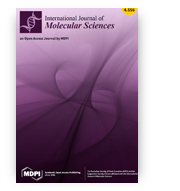Disorder of Biological Quality and Autophagy Process in Bovine Oocytes Exposed to Heat Stress and the Effectiveness of In Vitro Fertilization
Marcjanna Wrzecińska; Alicja Kowalczyk; Władysław Kordan; Przemysław Cwynar; Ewa Czerniawska-Piątkowska
International Journal of Molecular Sciences
Ministerial score = 140.0
Journal Impact Factor (2023) = 5.6 (Q1)
 The main problem in dairy herds is reproductive disorders, which are influenced by many factors, including temperature. Heat stress reduces the quality of oocytes and their maturation through the influence of, e.g., mitochondrial function. Mitochondria are crucial during oocyte maturation as well as the process of fertilization and embryonic development. Disturbances related to high temperature will be increasingly observed due to global warming. In present studies, we have proven that exposure to high temperatures during the cleaving of embryos statistically significantly (at the level of p < 0.01) reduces the percentage of oocytes that cleaved and developed into blastocysts eight days after insemination. The study showed the highest percentage of embryos that underwent division in the control group (38.3 °C). The value was 88.10 ± 6.20%, while the lowest was obtained in the study group at 41.0 °C (52.32 ± 8.40%). It was also shown that high temperature has a statistically significant (p < 0.01) effect on the percentage of embryos that developed from the one-cell stage to blastocysts. The study showed that exposure to a temperature of 41.0 °C significantly reduced the percentage of embryos that split relative to the control group (38.3 °C; 88.10 ± 6.20%). Moreover, it was noted that the highest tested temperature limits the development of oocytes to the blastocyst stage by 5.00 ± 9.12% compared to controls (33.33 ± 7.10%) and cleaved embryos to blastocysts by 3.52 ± 6.80%; the control was 39.47 ± 5.40%. There was also a highly significant (p < 0.0001) effect of temperature on cytoplasmic ROS levels after 6 and 12 h IVM. The highest level of mitochondrial ROS was found in the group of oocytes after 6 h IVM at 41.0 °C and the lowest was found in the control group. In turn, at 41.0 °C after 12 h of IVM, the mitochondrial ROS level had a 2.00 fluorescent ratio, and the lowest in the group was 38.3 °C (1.08). Moreover, with increasing temperature, a decrease in the expression level of both LC3 and SIRT1 protein markers was observed. It was proved that the autophagy process was impaired as a result of high temperature. Understanding of the cellular and molecular responses of oocytes to elevated temperatures will be helpful in the development of heat resistance strategies in dairy cattle.
The main problem in dairy herds is reproductive disorders, which are influenced by many factors, including temperature. Heat stress reduces the quality of oocytes and their maturation through the influence of, e.g., mitochondrial function. Mitochondria are crucial during oocyte maturation as well as the process of fertilization and embryonic development. Disturbances related to high temperature will be increasingly observed due to global warming. In present studies, we have proven that exposure to high temperatures during the cleaving of embryos statistically significantly (at the level of p < 0.01) reduces the percentage of oocytes that cleaved and developed into blastocysts eight days after insemination. The study showed the highest percentage of embryos that underwent division in the control group (38.3 °C). The value was 88.10 ± 6.20%, while the lowest was obtained in the study group at 41.0 °C (52.32 ± 8.40%). It was also shown that high temperature has a statistically significant (p < 0.01) effect on the percentage of embryos that developed from the one-cell stage to blastocysts. The study showed that exposure to a temperature of 41.0 °C significantly reduced the percentage of embryos that split relative to the control group (38.3 °C; 88.10 ± 6.20%). Moreover, it was noted that the highest tested temperature limits the development of oocytes to the blastocyst stage by 5.00 ± 9.12% compared to controls (33.33 ± 7.10%) and cleaved embryos to blastocysts by 3.52 ± 6.80%; the control was 39.47 ± 5.40%. There was also a highly significant (p < 0.0001) effect of temperature on cytoplasmic ROS levels after 6 and 12 h IVM. The highest level of mitochondrial ROS was found in the group of oocytes after 6 h IVM at 41.0 °C and the lowest was found in the control group. In turn, at 41.0 °C after 12 h of IVM, the mitochondrial ROS level had a 2.00 fluorescent ratio, and the lowest in the group was 38.3 °C (1.08). Moreover, with increasing temperature, a decrease in the expression level of both LC3 and SIRT1 protein markers was observed. It was proved that the autophagy process was impaired as a result of high temperature. Understanding of the cellular and molecular responses of oocytes to elevated temperatures will be helpful in the development of heat resistance strategies in dairy cattle.
DOI:10.3390/ijms241311164









